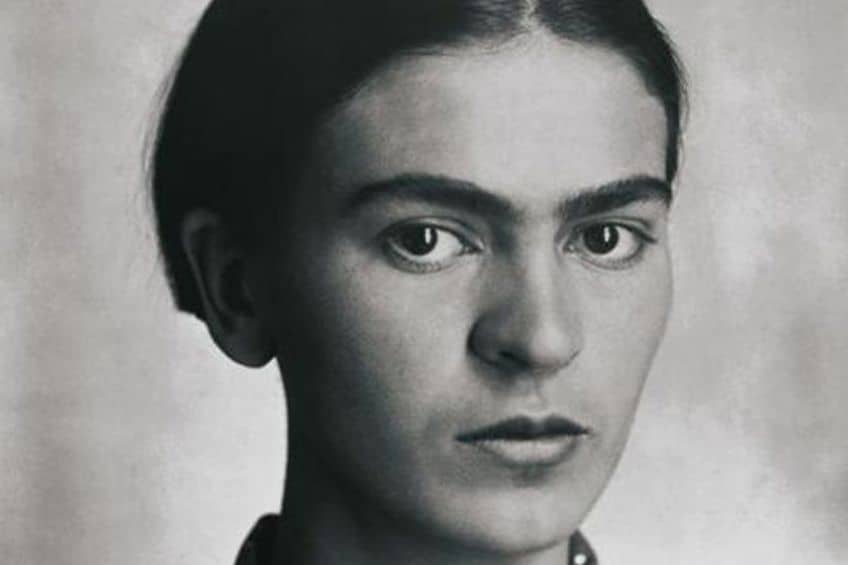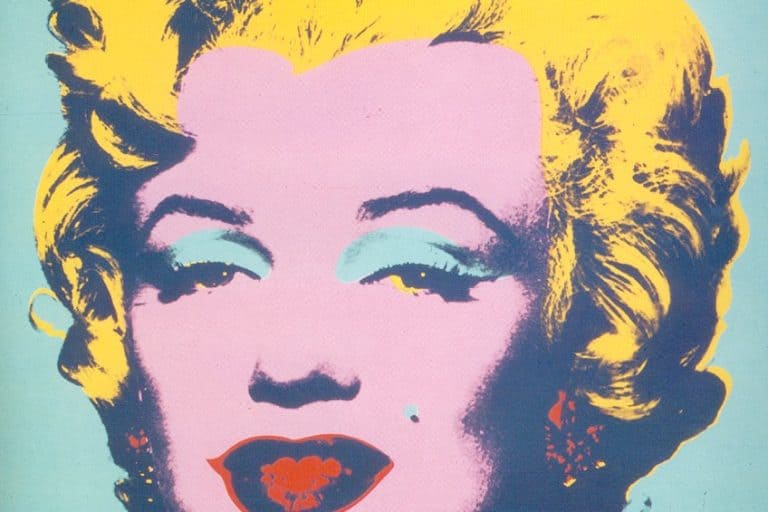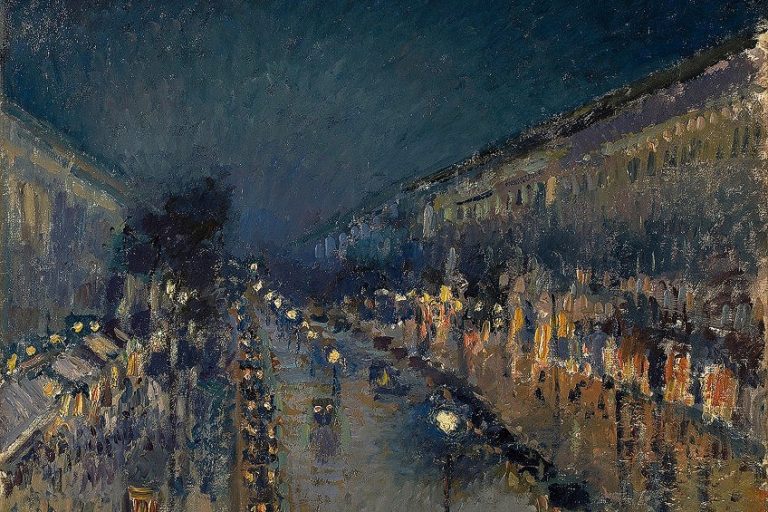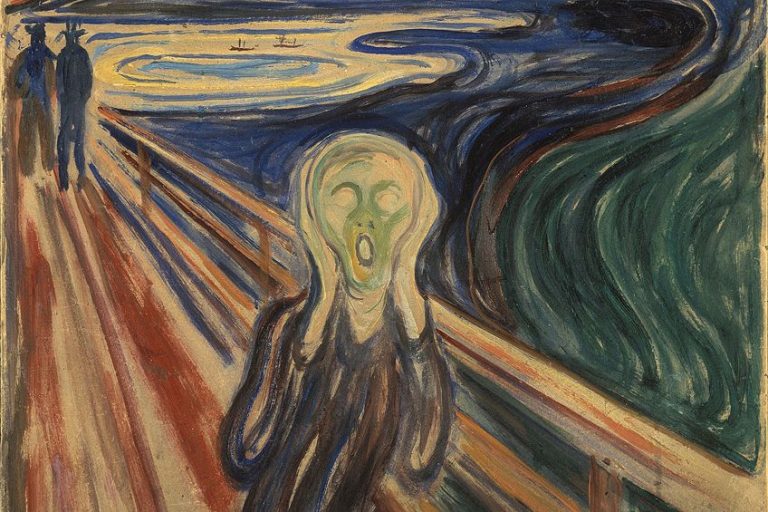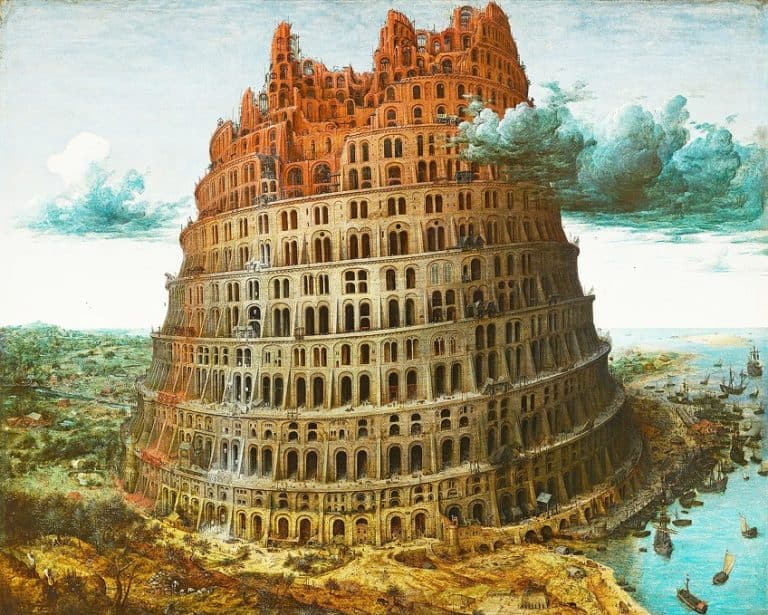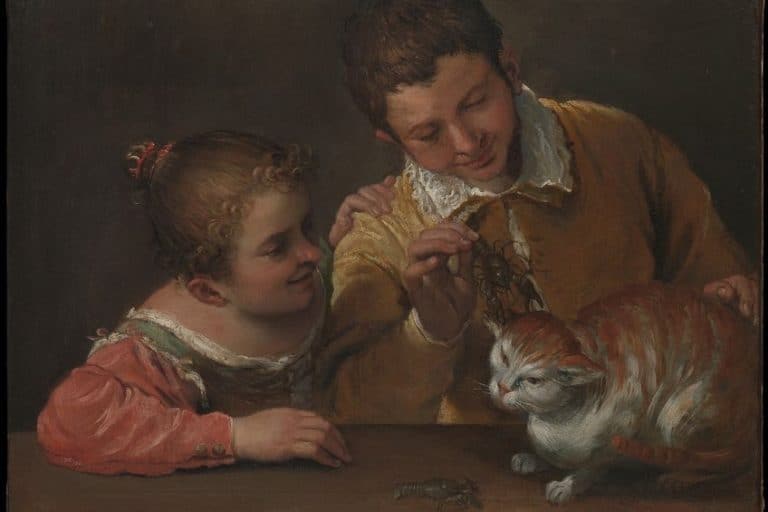“Self-Portrait With Cropped Hair” by Frida Kahlo – An Analysis
Frida Kahlo was one of the most culturally diverse female artists of her time. She did not belong to any one art movement, but embodied the multi-facets of her life and expressed it through her art. This article will explore just one of her self-expression artworks in more detail, namely her Self-Portrait With Cropped Hair oil on canvas, which she painted in 1940.
Artist Abstract: Who Was Frida Kahlo?
The famous and beloved Mexican artist Frida Kahlo’s birth date was July 6, 1907, and she died on July 13, 1954. She was born in the village called Coyoacán in Mexico City. She spent her childhood in what has famously been called “The Blue House”, or La Casa Azul, which was her family home, and where she died. Her art has always been an expression of her inner world, having experienced hardships from an early age, from having polio to a fatal bus accident that left her with anatomical and reproductive challenges throughout her life. She was married to Diego Rivera, whom she divorced and remarried, as well as had several affairs throughout her life. Her artworks include Self-Portrait With Thorn Necklace and Hummingbird (1940) and The Wounded Deer (1946).
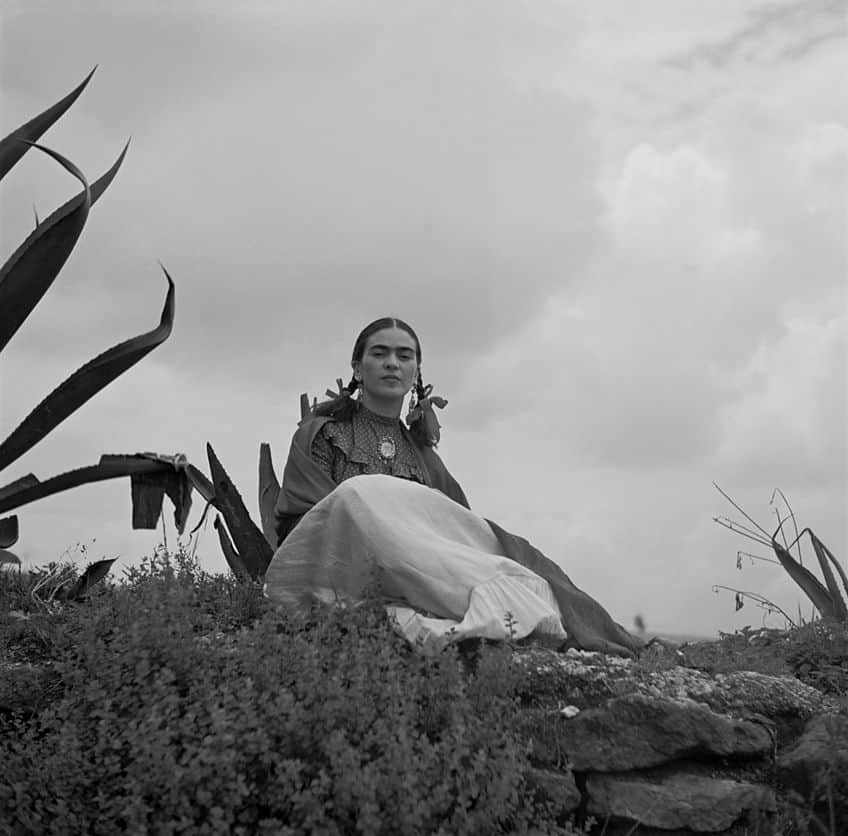
Self-Portrait With Cropped Hair (1940) by Frida Kahlo in Context
| Artist | Frida Kahlo |
| Date Painted | 1940 |
| Medium | Oil on canvas |
| Genre | Self-portrait |
| Period / Movement | Naïve Art |
| Dimensions (cm) | 40 x 27.9 |
| Series / Versions | N/A |
| Where Is It Housed? | Museum of Modern Art, New York City, United States |
| What It Is Worth | N/A |
The Self-Portrait With Cropped Hair analysis below will explore a brief contextual overview, discussing some of the main reasons why Frida Kahlo painted it. This will then be followed by a formal analysis looking at the composition in terms of subject matter and some of the artistic techniques based on the art elements and principles.
Contextual Analysis: A Brief Socio-Historical Overview
Self-Portrait With Cropped Hair by Frida Kahlo is just one of many visual renditions symbolizing Kahlo’s wildly intimate and conflicted relationship with Diego Rivera. When she painted this composition in 1940, she and Diego Rivera were divorced at that time; they were believed to have divorced in late 1939, but they remarried again in 1940.
There is a significant symbolism in Self-Portrait With Cropped Hair by Frida Kahlo that directly relates to her divorce from Diego and the complexities of her personality intertwined with his.
Many sources have stated that Kahlo embraced her masculinity by wearing a suit, which ultimately symbolized her departure from needing a man, associating more with her “independence”. Furthermore, the significance of her cutting her hair also points to the loss of her feminine aspects, but also that Diego reportedly enjoyed her long hair. The composition can be read from various perspectives that ultimately relate to Kahlo’s loss and emotional suffering from her relationship with Rivera.
Formal Analysis: A Brief Compositional Overview
The compositional overview below will discuss The Self-Portrait With Cropped Hair by Frida Kahlo in terms of its subject matter and the artistic techniques within the categories of the art elements and principles. Frida Kahlo’s art style was not only symbolic but often described as “colorful” or “bold”; she also taught herself how to paint from an early age.
Subject Matter: Visual Description
Self-Portrait With Cropped Hair depicts Frida Kahlo as the main figure in the foreground center of the composition. She is sitting on a four-legged chair, in what appears to be a room, but it is unclear where exactly it is. Kahlo appears to be looking directly at us, the viewers, but her eyes are gazing to her right (our left). She is wearing an oversized black men’s suit with a deep reddish buttoned shirt underneath, and what appears to be female-heeled shoes, which are contrastingly small compared to the suit’s size.
She is holding a pair of scissors in her right hand (our left) and a lock of hair in her left hand (our right); both her hands are resting on her lap. Her hair is cut short, and coupled with the suit, she appears more masculine.
Strewn all around her on the entirety of the floor, from the foreground to the background, are clumps of hair strands that she has undoubtedly cut off. The clumps of hair are also hanging from the chair. In the background, on the uppermost section of the wall are written the lyrics from a Mexican song with musical notes below it. It reads: “Look, if I loved you it was because of your hair. Now that you are without hair, I don’t love you anymore”.
Texture
The texture in Self-Portrait With Cropped Hair by Frida Kahlo appears implied, for example, the softness of the hair strands, the smooth wooden appearance of the chair, or the soft folds of the suit’s fabric. Furthermore, there also appears to be a tactile texture created by the paintbrush.
Color
In Self-Portrait With Cropped Hair, Frida Kahlo utilized a neutral color scheme of mostly blacks, browns, and grays. For example, the floor is a brownish color, and the wall is a more neutral grayish color with hints of what appear to be light pinks and blues. Kahlo’s suit appears almost black or dark gray and her shirt is maroonish. The chair is a lighter brown/beige color, which creates a subtle contrast between light and dark, however, it does not detract from the overall color harmony of the composition.
Shape and Form
Self-Portrait With Cropped Hair depicts mostly naturalistic forms, which is evidenced by Kahlo’s figurative presence, however, there are also some geometric shapes that occur from the chair’s structure depicting some rectangular, square, and cylindrical shapes.
Line
There are a variety of lines in Self-Portrait With Cropped Hair by Frida Kahlo, for example, horizontal lines occur in the background where the floor and wall converge and where the musical lyrics and notes are painted, which moves across the wall. The above is contrasted by the verticality of the composition by Kahlo’s upright posture as well as the chair.
There is a repetition of curved lines created by the clumps of hair on the floor, which creates a seemingly randomized pattern.
Space
Frida Kahlo depicted an interior space in Self-Portrait With Cropped Hair and placed herself in the foreground center, making herself the focal point. The clumps of hair on the floor, which extend into the background, also create a sense of depth along with a horizon line created where the floor and wall meet.
Kahlo’s Heart Strands
As much as Self-Portrait With Cropped Hair by Frida Kahlo is a visual depiction of the artist taking a stand for her independence after the breakdown of her marriage to Diego Rivera, although she is seated, the cut hair strands could symbolize aspects of her heart cut into pieces.

This article discussed “Self-Portrait With Cropped Hair” by Frida Kahlo, which was painted in 1940 just after the Mexican artist experienced a divorce from her husband Diego Rivera. It also discussed what the subject matter consists of with an exploration of Kahlo’s artistic technique based on the art elements and some of the prominent art principles.
Frequently Asked Questions
Who Painted Self-Portrait With Cropped Hair?
The Mexican artist Frida Kahlo painted the oil on canvas work titled Self-Portrait With Cropped Hair (1940). It was motivated by Diego Rivera, whom she divorced around late 1939. The canvas measures 40 x 27.9 centimeters and is housed at the Museum of Modern Art in New York City.
Why Did Frida Kahlo Cut Her Hair?
In Self-Portrait With Cropped Hair (1940) by Frida Kahlo, she depicted herself cutting all her long hair off, notably her defining braids. There are reportedly several symbolic meanings to this portrayal, namely around her loss of her relationship with her husband, whom she divorced several months prior to painting her portrait, her independence, and the so-called loss of her femininity, which was defined through her long braids.
What Is the Location of Self-Portrait With Cropped Hair by Frida Kahlo?
Self-Portrait With Cropped Hair (1940) by Frida Kahlo is held at the Museum of Modern Art in New York City, United States.
Alicia du Plessis is a multidisciplinary writer. She completed her Bachelor of Arts degree, majoring in Art History and Classical Civilization, as well as two Honors, namely, in Art History and Education and Development, at the University of KwaZulu-Natal, South Africa. For her main Honors project in Art History, she explored perceptions of the San Bushmen’s identity and the concept of the “Other”. She has also looked at the use of photography in art and how it has been used to portray people’s lives.
Alicia’s other areas of interest in Art History include the process of writing about Art History and how to analyze paintings. Some of her favorite art movements include Impressionism and German Expressionism. She is yet to complete her Masters in Art History (she would like to do this abroad in Europe) having given it some time to first develop more professional experience with the interest to one day lecture it too.
Alicia has been working for artincontext.com since 2021 as an author and art history expert. She has specialized in painting analysis and is covering most of our painting analysis.
Learn more about Alicia du Plessis and the Art in Context Team.
Cite this Article
Alicia, du Plessis, ““Self-Portrait With Cropped Hair” by Frida Kahlo – An Analysis.” Art in Context. April 13, 2023. URL: https://artincontext.org/self-portrait-with-cropped-hair-by-frida-kahlo/
du Plessis, A. (2023, 13 April). “Self-Portrait With Cropped Hair” by Frida Kahlo – An Analysis. Art in Context. https://artincontext.org/self-portrait-with-cropped-hair-by-frida-kahlo/
du Plessis, Alicia. ““Self-Portrait With Cropped Hair” by Frida Kahlo – An Analysis.” Art in Context, April 13, 2023. https://artincontext.org/self-portrait-with-cropped-hair-by-frida-kahlo/.


